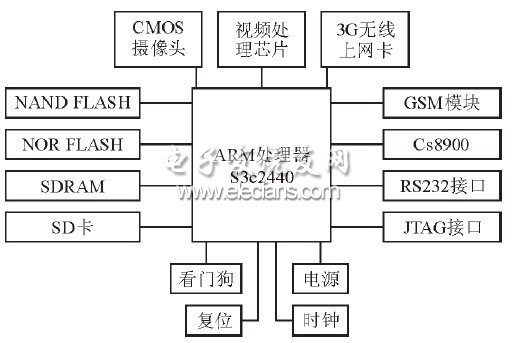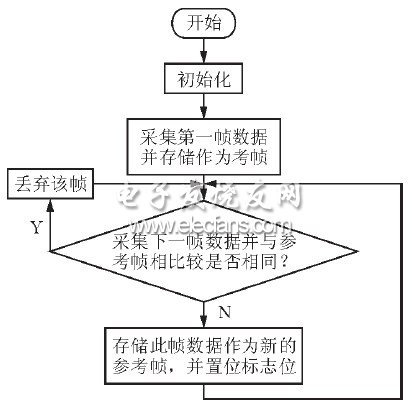introduction
In recent years, the combination of embedded technology and Internet technology has made embedded technology play an increasingly important role in remote control, intelligent transportation, video conferencing, security and other fields. With the improvement of people's living standards and the accumulation of personal wealth, cars have gradually become a common means of transportation for people to travel, and cases of car theft are also common. Therefore, how to ensure individual or collective cars has become an urgent problem to be solved. This has prompted us to develop a lower-cost and more convenient video surveillance device—vehicle security system to meet the needs of car owners.
1 System hardware design
Automobile security and defense system is mainly composed of video acquisition and processing module, 3G wireless network card, embedded Web Server, GSM module and client browser. The embedded Web Server is made up of Samsung's ARM processor S3c2440 and network chip. The camera first transfers the collected image data to the video processor, which compresses and encodes it, and then passes it to the ARM processor. The ARM processor then compares this frame of data with the previous frame of data. If there is no moving object, the frame is discarded to save storage space; if it is not the same, it indicates that there is a moving object. The processor will store this frame of data and start the GSM module to send an alarm message. If the client wants to know the situation in the car in time, it can access the embedded Web server through the browser to view the real-time video.
The system hardware mainly includes SAMSung's ARM processor S3c2440, 3G wireless network card, 16 / 32-bit ARM processor implements MMU, AMBA BUS and Harvard cache architecture, with independent 16KB instruction cache and 16K B data cache. The network chip uses the more commonly used Cs8900.
SDRAM uses two HY57 V561620 (32M). NORFLASH selects AM29LV 160DB. NAND FLASH selects 32M K9F 1208 chip. The video processing part adopts the hardware H.264 codec, specifically adopts QL202B of American Q pixel company, which is a low-power real-time single-chip half-duplex H.264 / AVC encoder. The system hardware structure diagram is shown in Figure 1.

Figure 1 Block diagram of system hardware structure
2 Software design
The software design of this system includes: transplantation of embedded Linux operating system, compilation of video acquisition program and dynamic detection program, implementation of embedded Web Server, and compilation and transplantation of related drivers.
2.1 Dynamic detection of video capture
The principle of video acquisition and dynamic monitoring is shown in Figure 2. Set the cycle of the camera video collection cycle to T. After the system is initialized, the first frame of the image obtained is saved as a background image. Next, a frame is collected every time T, and the background subtraction method is used to detect the moving target. This detection method is to extract the target from the video stream in real time, detect the points related to the moving three-dimensional object in the image sequence, and filter out the information in the image that is not related to the moving object.
The software is developed using QT / E's image processing class library QImage process. First collect two frames of image data cyclically, and after binarization, extract the brightness of the two images to make a difference. After the background difference image is obtained, it is compared with the set brightness threshold, and if the threshold is not exceeded, the frame is discarded. If this value is exceeded, an alarm is triggered, the GSM module is started to send an alarm message, and at the same time, the ARM processor is notified so that the ARM processor can perform subsequent work.

Figure 2 Flow chart of video collection
CAT6A UTP Keystone Jack
CAT6A UTP Keystone jack
NINGBO UONICORE ELECTRONICS CO., LTD , https://www.uonicore.com